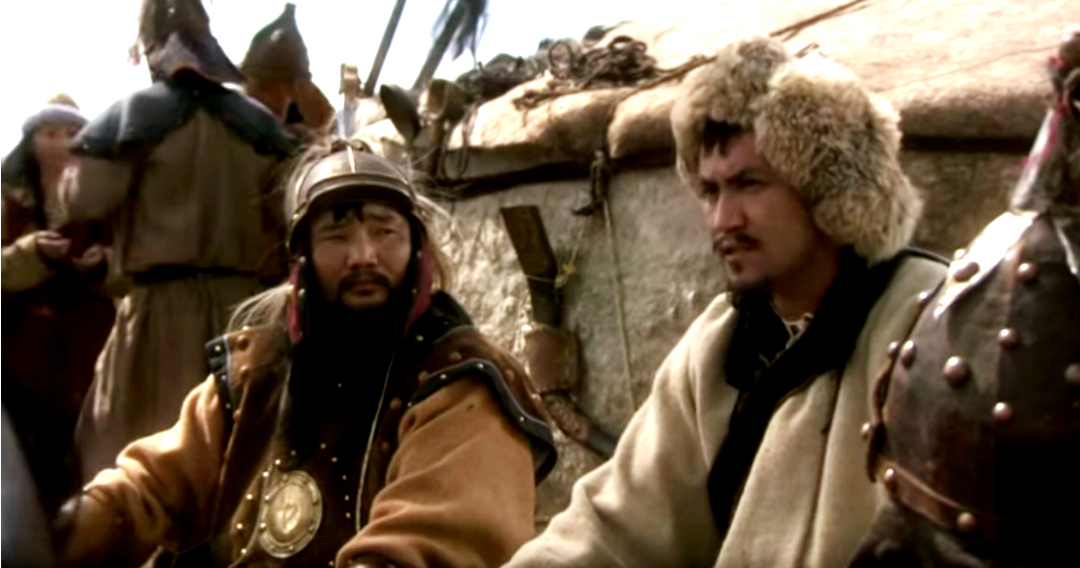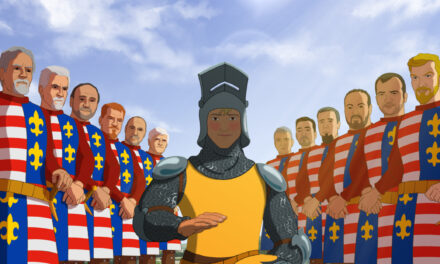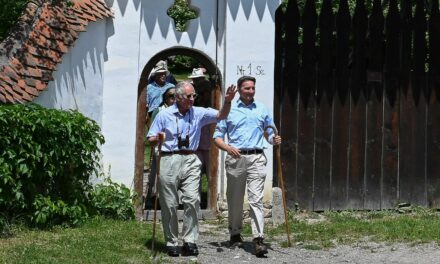A nation that does not know its past does not understand its present, and cannot create its future!"
Europe needs Hungary ... which has never allowed itself to be defeated -
Father and son - II. András and IV. Béla's battles against each other and for the security of the Carpathian basin did not
weaken the Árpád country, but rather strengthened it, contrary to the previously accepted claims.
When the 29-year-old prince IV. He ascended the throne under the name Béla (1235-1270), he could not have known that after the 41-year reign of the first founder of the state, he would become the second founder of the country, and with his 35-year reign, he would be the second longest-reigning king among the Árpád kings.
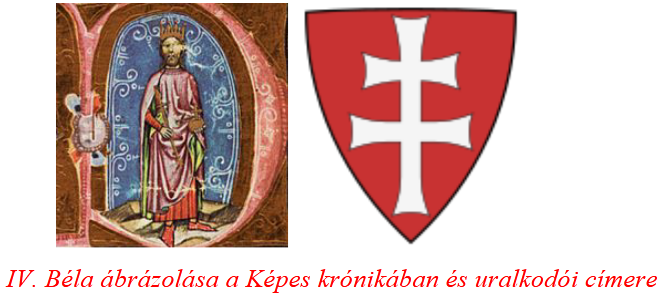
King Béla's entire life and reign were presumably greatly influenced by the three women who were closest to him by blood. Gertrudis was murdered in 1213 , and whose death the seven-year-old child had to watch.
This tragic experience accompanied him throughout his life, and his desire for revenge did not subside even after he ascended the throne. He found his father's retort to be little, which perhaps his tutor, Miska Bán, instilled in the child.
The young man could not even accept that his father brought a new wife into the family already in 1215.
The second person we should mention is Béla's younger sister, Erzsébet born in Sárospatak , one of the best-known figures in the Christian world. It can be assumed that after the Virgin Mary, Saint Elizabeth the most revered
female saint. The youngest of the three women, Béla's daughter Margit , is also a significant figure in Hungarian religious history.
Margit was characterized by her pure life and unshakable faith , who dedicated her whole life to helping the poor and the downtrodden.
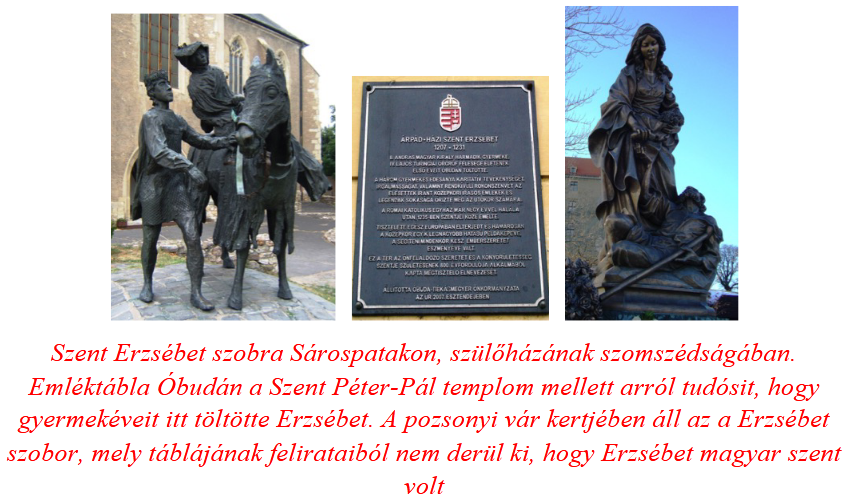
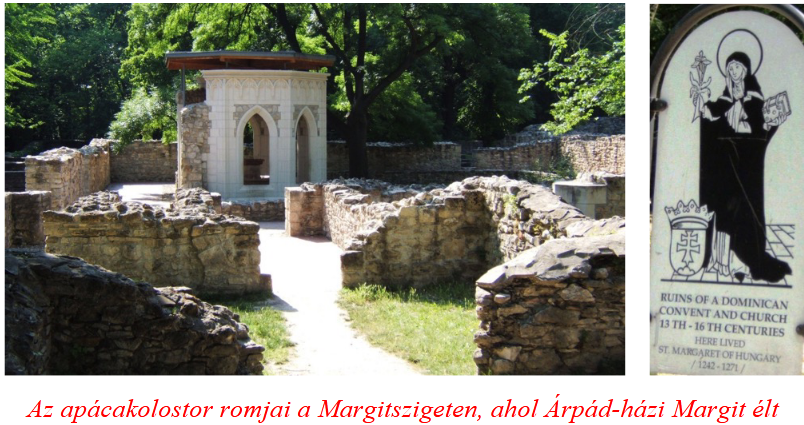 Béla's second coronation (the first took place when he was eight years old, in 1214) unusually did not of Our Lady of Fehérvár founded by
Béla's second coronation (the first took place when he was eight years old, in 1214) unusually did not of Our Lady of Fehérvár founded by
St. István , but in the Grand Duke Géza in 972, located about two hundred meters away.
ARC. The first church of Béla Fehérvár , which was consecrated in honor of St. Peter and St. Paul, was later rebuilt.
The aim of Béla's policy – as evidenced by the return to Géza – was to restore the unlimited power of the Árpáds. Perhaps that is why he chose the holy place designated by Géza.
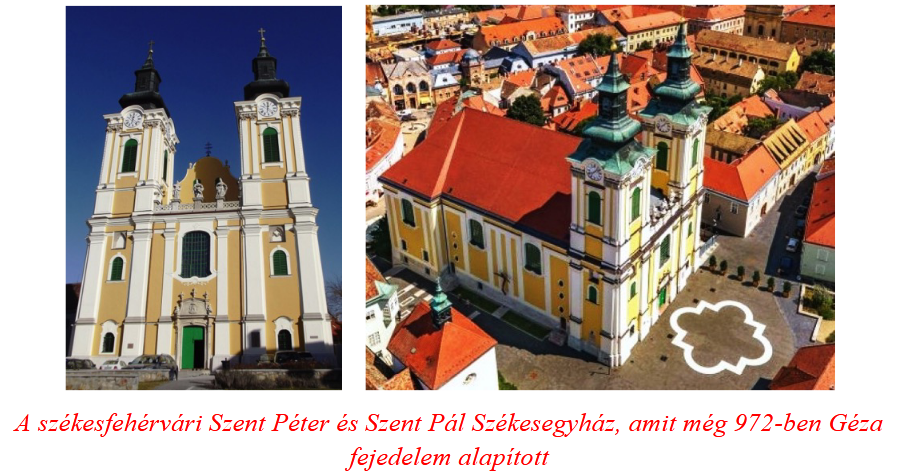
Béla wanted to restore III. Béla's glorious age.
The first step in this was to take back the royal possessions donated by his predecessors. This law issued in 1237 confirmed the III. István , which caused enormous indignation among the barons.
The royal decree aimed at curtailing the independence of the nobles was compounded by the inclusion of the Kunis.
The hidden purpose of this last provision was to increase the army and spread Christianity .
(Let's add the now-forgotten, but natural knowledge in the 13th century, that the Hungarians considered the Kunas to be their relatives. They also belonged to the great family of the Scythian peoples, as can be said, the Kunas were our "old selves". Let us mention that
Among others János Hunyadi from Cumania, the country of the Kunis .)
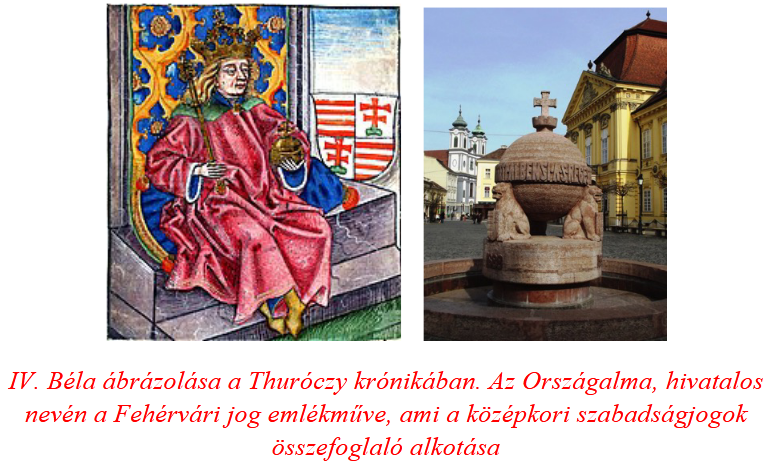
The ornamental fountain has been standing in the square next to the City Hall since 1943, which symbolizes the historical importance of the city. According to the Hungarian translation of its circular inscription in Latin, Fehérvár's freedoms were granted by Saint István. The cross refers to the acceptance of Christianity, and the wall crown refers to the coronation city status of the first real Hungarian city. The three lions are the country, the city and II. He holds the coat of arms of King András. (In the 1950s, the upper part of the statue was removed. Indicating that the communist system of that time broke with the Christian and national values and traditions that existed since Saint Stephen.)
Dissatisfaction forced the king to change. ARC. In 1239, Béla stopped taking back land holdings. The chaos in domestic politics was exacerbated by the Mongol-Tatar threat, which had been known since 1236. The threat became a reality by the end of 1240. The Mongol conquerors reached the eastern border of the country. Friend Julianus, who with his fellow monks still II. At the time of András, he set out to search for the accommodation of the Hungarians left in the east. He proved that Magna had found them in Hungary. The friend reported on the success of his mission, but later he brought news of the Mongols marching to the west, as well as Batu Khan's letter calling for surrender. The Hungarian king did not answer this, which caused the khan's anger.

A short time later, the Mongol armies swept away the remaining Hungarians in Bashkiria (Magna Hungaria), so they were placed in the IV.
Béla could no longer settle in his new homeland .
(More recent research shows that the monks reported their journey not only to the Hungarian king, but also to the Pope. This detailed report, which can be found in the Vatican, is still secret to this day.) On the border of Karcag, the Nagykun Millennium Memorial, handed over in 2001 depicts the scene when IV. In 1239, during the Easter holidays, King Béla received Khan Kötöny , the leader of the settling Kuniks. The first settlement of the Kunis was not successful, because the nomadic population of about forty thousand people could not integrate into the social order of Hungary. However, after the Mongol invasion, the resettlement of the Kuns was successful. As a result, at the end of the 15th century, the Kunis were already farming. However, like the Székelys, they maintained their independence for centuries. The monument depicts the coat of arms of Nagykunság, the two-tailed lion, on top of the granite column rising between the figures of the two horsemen.
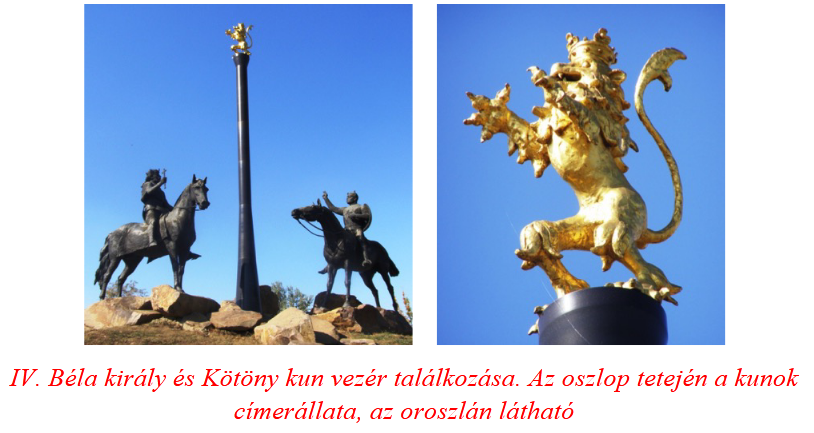
Frigyes Babenberg, , sharpened
the internal contradictions After defeating a smaller Mongol force, "proving his helpfulness", he incited the Hungarian lords against the Kuns.
The enraged nobles murdered leader Kötöny in the Rákosmeze camp. The Kuns retaliated by causing enormous destruction in the Danube-Tisza valley and in Szerémség, and withdrew from the country.
And Frigyes, as if he had done his job well, returned to Vienna. Such circumstances preceded the battle that took place near Muhi, on the banks of the Sajó, on April 10-11, 1241, and which was the greatest tragedy of the Árpád era.
A part of the country was destroyed, the loss of life was great, but by no means as great as was taught in Hungarian schools for decades.
King Béla's real personality is revealed in his extensive correspondence. He was the first Hungarian ruler whose letters reveal not only the political conditions of the time, but also the king's character and personality. He wrote most of his letters to contemporary popes, which bear witness to the European Christianity and political network of the time. (Despite all its faults, today we can only mourn that Europe.) King Béla's greatness lay in the fact that he had the courage to face the country's human and economic strength, and he governed his country based on that. In 1241, when the Mongol invasion began against Hungary, the power struggle between the pope and the emperor captured the attention of the Christian states, and our country was left alone, as it had been so many times before. (This will happen countless times in the coming centuries. After all, this is also happening at the beginning of the 21st century.)
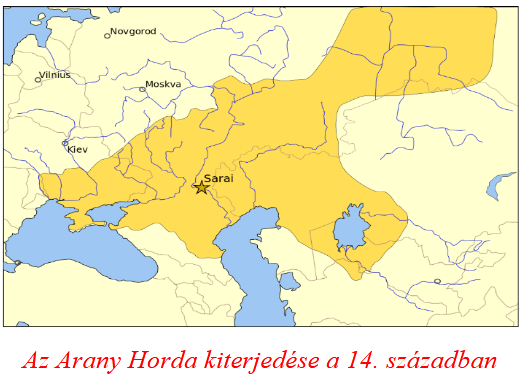
In 1232, the Mongols occupied Bashkiria and part of the country of the Volga Bulgarians. After that, in 1235, friend Julianus and met the Hungarians living there. However, in 1236
Khan Subotáj When Julianus returned in 1237 to search for his relatives in the East, he could no longer find the Hungarians who had lived there before.
Julianus returned to Hungary with a letter sent by Batu Khan, a short excerpt of which sheds light on its content. "I am the khan, the emissary of the Heavenly King, to whom he gave power on earth, to maintain those who submit... and to crush those who resist: I wonder at you, king of the Hungarians, that... among the emissaries... why do you not send even one of them back to me?"
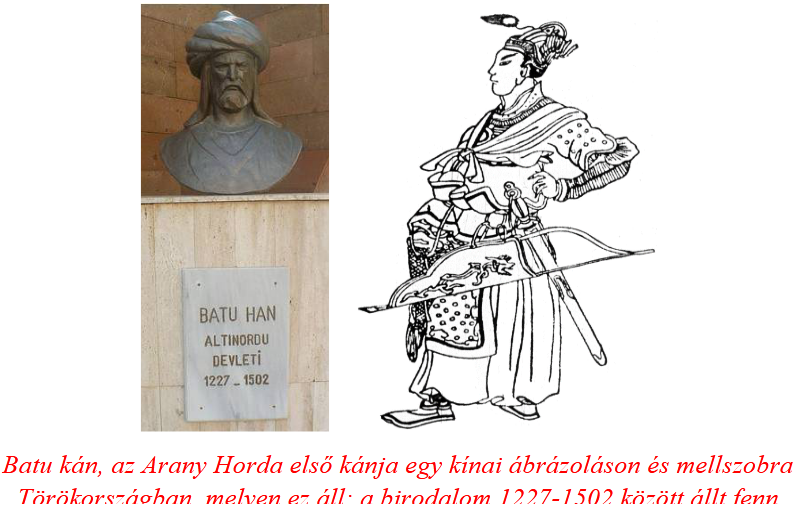
Although Béla sent letters asking for help to the Pope, the King of France and the German-Roman Emperor, he received no support other than kind words.
1240 , Kiev had already fallen, and the Mongol armies were getting closer and closer to Western Europe, which thought it was protected.

Batu Khan, in order to prevent the Polish-Hungarian alliance, attacked and occupied Lublin, Kraków and Sandomierz with his army of ten thousand people at the beginning of 1241.
The decisive Battle of Legnica ended on April 9, 1241 with the complete defeat of the Poles. Fortunately for Poland, however, the Mongol-Tatar campaign was primarily directed against the Kingdom of Hungary, so they withdrew from the occupied territories.

The Mongols broke into the Carpathian basin at the Vereckei pass, where they swept away the five-thousand-strong army of
Dénes In the meantime, King Béla with nearly 25,000 soldiers, mainly mercenaries (other sources speak of 50-60,000 people, which can be considered excessive) withdrew from Pest and followed the route of the Tatars and
stopped at Muhi. The Hungarian army camped next to the Sajó on the undefended, flat terrain. The first attempt of the Mongols to cross the river on the only bridge failed. Kalocsa Archbishop Csák Ugrin Duke Kálmán repulsed the attack, and this made the Hungarians confident.
the fighting skills of the Hungarians of the Battle of Bratislava, the art of deception, have already been forgotten (The barrage of arrows, the rapid horse attacks, the feigned retreat and the renewed attacks.) The Mongol armies found the fords under the cover of night and attacked the Hungarian camp, which had returned to rest, from two directions. However, despite the surprise and the numerical superiority, this attack was not as decisive as it was advertised in scientific works and textbooks for decades.
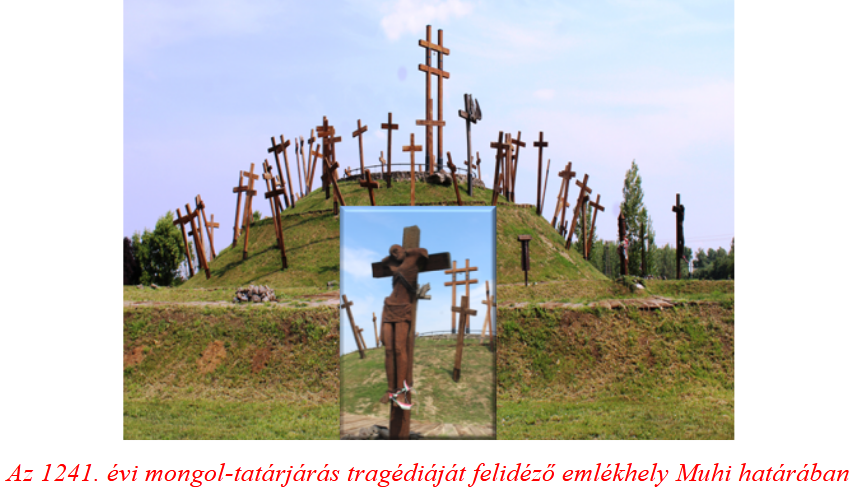
The Mongol left wing attacking under the leadership of Batu Khan was already on the verge of losing when Szúbotáj Khan, who came to his aid, pushed the Hungarians back
to the chariot castle in a great struggle. At dawn on April 11, 1241, although the king's troops fought heroically, the Mongols were victorious. Those who could still run away. Fortunately, the king's bodyguards were able to escape from the Mongol ring, but the colors of the Hungarian leaders fell in the battle.
In the light of recent research on the site of the battle, it should be mentioned that the monument commemorating the tragedy is not located at the place where the decisive battle took place.
The key would be to excavate the remains of the bridge, but no trace of this has yet been found. The hydrographic conditions of the time can not only be applied to the Muhir and the Sajo, but almost the entire flat areas of the Carpathian basin were strongly redrawn. Today's Muhi has little to do with the site of the 13th century battle.
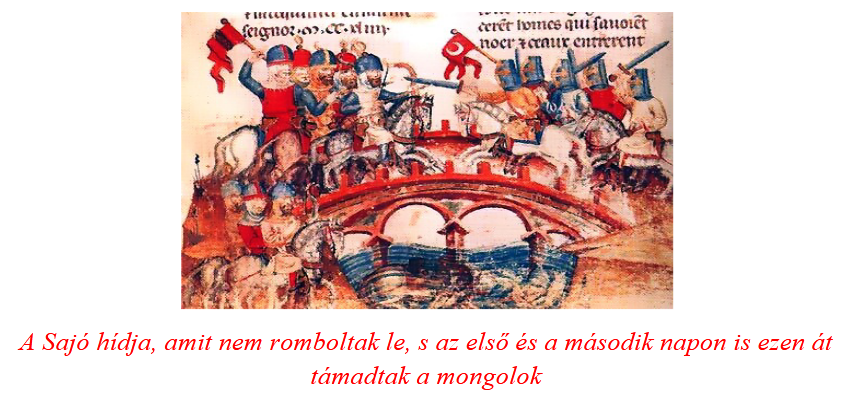 Despite the precise description of the battle, also referred to as the Battle of the Sajó River, and the sporadically discovered objects, the precise location of the expert camp and the bridge still awaits. Somewhere in the area surrounded by the Tisza-Hernád-Sajó rivers, it is hoped that archaeologists will find the site of the battle in the future.
Despite the precise description of the battle, also referred to as the Battle of the Sajó River, and the sporadically discovered objects, the precise location of the expert camp and the bridge still awaits. Somewhere in the area surrounded by the Tisza-Hernád-Sajó rivers, it is hoped that archaeologists will find the site of the battle in the future.
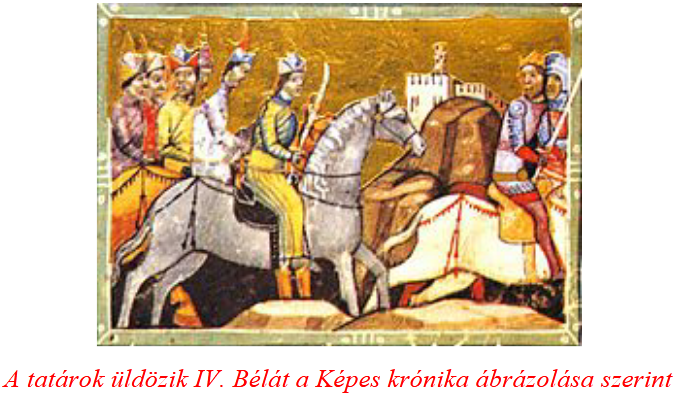
The king fled to the castle of Nyitra under the influence of Gömör, and from there he arrived in Bratislava with a larger entourage. Frederick , the cunning Austrian prince,
invited the Hungarian king to the safer Hainburg castle, promising him protection.
There, however, he blackmailed her - not exactly in a Christian way. He took the valuables he had taken with him, and even stole three counties - Sopron, Moson, Bratislava - from the Hungarian ruler. The greed of the Austrians knew no bounds, and taking advantage of the king's difficult situation, they even occupied Győr. ARC. After that, Béla made his way to the Dalmatian coast. He reached the coast via Segesd, Varasd and Zagreb, followed by his pursuers. Béla holed up in the castle of Trau (Trogir), which was still on the island at the time. He settled his family in the nearby castle of Klissza. The castles could not be captured by Kadán
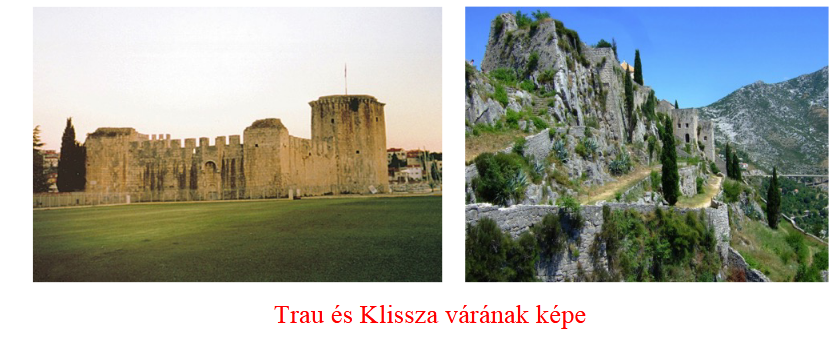
In March 1242, the Mongol armies, which mercilessly destroyed the country, left the country in the direction of Havasalföld.
It arises that if they won a decisive victory, if they yoked the whole country, then why did they withdraw so quickly and with their work unfinished? One of the reasons cited earlier in the historiography was that Batu Khan hurried home to elect the great khan because Ögödej , the great khan of the Mongols, had died in distant Mongolia. According to another explanation, the tactics of the eastern conquerors were characterized by the fact that the first attack was only aimed at scouting the territory to be conquered and decimating the peoples living there. The third testimony of the Mongol campaign was that only the few stone castles could not be captured. They didn't just because they didn't bring siege engines with them. However, the reality is different in many respects. I am referring to the historical facts and legalities mentioned in the Introduction.
• Grand Khan Ögödej really died in 1241, but the election of a new Grand Khan did not take place until 1246, in which Batu Khan did not even participate.
• The destruction of the Hungarians was not as significant as it was proven in previous studies. In other words, half of the country's population did not die, which would have meant one and a half million victims. Approximately 400,000 people fell victim to the Mongol invasion. Of course, that's a lot! Our ancestors saved the western half of Europe from the Mongol invasion in the middle of the 13th century, neither for the first time nor for the last time.
• It is very important to mention that King Béla, the second founder of the country, was able to revive the rest of the population in a relatively short time, and was able to put the reconstruction of the country on new foundations. From this, we can conclude that there were workers and life force in Hungary.
• The Mongol army retreated not only for tactical reasons. Among other things, because in addition to the Hungarians, the neighboring Christian states also showed strong resistance, which broke the power and momentum of Batu Khan.
• At Muhi, only a part of the Hungarian force appeared. After all, after the Mongol campaign IV. Béla led several campaigns abroad within a short period of time. First, he took back the three western counties that had been fraudulently stolen from Frederick of Austria.
• In 1243, Venice annexed Zára again, taking advantage of Hungary's difficult situation. The calamari who professed to be Christians did not deny themselves. For them, the economic advantage was more important than the security of the region. In addition, in the summer of 1243 locusts and famine ravaged the country, which hindered construction.
• The certificates also testify that, in addition to the nobles, commoners also opposed the Mongol conquerors. Batu Khan had a lot of trouble in providing for his troops scattered throughout the country and organizing supplies. (It should be noted here that on April 5, 1242, the Russians won a decisive victory over the Teutonic Knights at Lake Csúd, and thus were able to line up their forces against the Mongols and Tatars.)
• One of the reasons for the Mongol retreat was that the weather was unusually cold and rainy in the winter of 1241/42. In the spring, the troops could not advance due to the great mud, as the Hungarian plain turned into a sea of swamps. There was no harvest, so neither the horses nor the conquerors had access to food. The step weather lasted until 1244.
• We know specifically that in the winter of 1242 Fehérvár, Esztergom, Visegrád, Győr, Veszprém, Tihany, Moson, Pannonhalma, Sopron, Vasvár, Zala, Léka, Újhely, Nyitra, Bratislava, Komárom, Fülek, Abaújvár remained in the hands of the Hungarians. In addition to these, the nomadic conquerors could not take another hundred and sixty castles, monasteries, towns, and fortresses. In other words, there were many more settlements left in the hands of the Hungarians than previously stated.
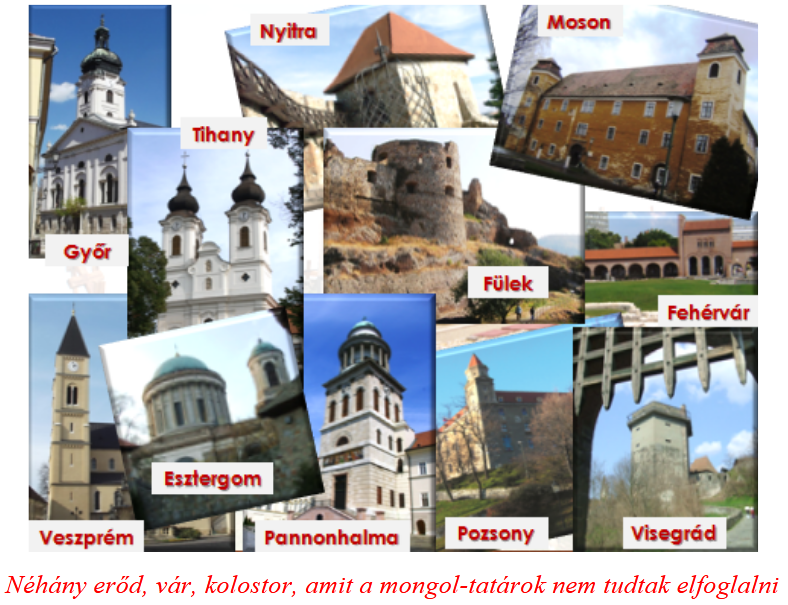
Master Rogerius's description reports on the cruelty and inhumanity of the Mongols.
It can be read, for example, that they brought in the crops that were with the peasants. that, men could save their own lives only by dishonoring their wives, daughters, and sisters. There is no doubt that the Mongol invasion, or, as it became known in Hungarian historiography, the Tatar invasion was the greatest tragedy of the Árpád era. But thanks to the stable foundations of the country, the laws of leader Árpád and King István, the majority of the nobility, and the hardworking craftsmen settled from Hungarian and foreign lands, the Carpathian basin gained new strength. The Mongol invasion did only as much harm to the Kingdom of Hungary as the loss of the Battle of Augsburg in 955 did to the Principality of Hungary. It did not shake its foundations, but rather strengthened the country.
Author: Ferenc Bánhegyi
(Cover image source: YouTube)
The parts published so far can be read here: 1., 2., 3., 4., 5., 6., 7., 8., 9., 10., 11., 12., 13.

